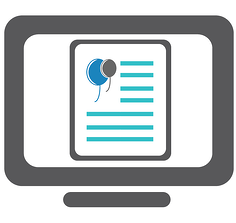"I held a party and nobody came" begins a particularly morose 1972 Bee Gees song ("I Held A Party") We learn that the singer (Robin Gibb) threw a bash only to sit there, hopefully staring at the door for someone, anyone to show up. All that work, all that planning. The guacamole, the bean dip. Just sitting there. Very sad. 
Hopefully at least a half-a-dozen people show up to your parties or special events, but for small businesses, the fear captured in this song is very real. Planners lay awake at night wondering, "Will people really come to our event? There's a buzz around it - right? Are we effectively using social media to promote events?" before inevitably sitting up and turning on the television and watching infomercials.
But insomnia is a horrible thing, so to make things a bit easier for all event planners out there, we've created a handy checklist for marketing special events. Oh, and one other thing: the urge to have an ad hoc, unstructured approach to event marketing is strong. Unfortunately, it will just make your life more difficult in the long term.
Our checklist is loosely chronological, beginning with the basics and ramping up towards the more "in-the-trenches" kind of marketing we all know and love.
Here it goes:
- Good Copy Goes a Long Way. Just because you think your event is super-cool doesn't mean others will (we warned you against "The English Patient" costume party, although it did look good on paper.) So start things off on the right foot: make sure the language around your event is peppy, exciting, and share-able. Be explicit around the details, cost, and what attendants can expect. Make sure you can succinctly answer the question, "What will attendees get from coming to this event?" Most importantly, solicit suggestions and feedback on social media and respond in kind.
- Define Who, Exactly, You're Trying to Target. If someone asks, "Who do you want to come to your event?" you'll likely answer, "Everyone!" But marketing to "everyone" doesn't come cheap. Be pragmatic. After all, you, more than anyone, have a deep understanding of your customers and prospects. Use this knowledge by identifying the target audiences you'd like to attract: their demographics, interests, and social behaviors. What social media platforms do they use? What will motivate them to attend or share information? What content resonates most with them?
- Create a Social Media Event Infrastructure. Now that you know who you're targeting, you can officially employ social media to promote your event. At the minimum, create a Facebook event, join the event, and subsequently invite all of your followers to the event. Along the same lines, you can roll out targeted content via steady blogging, Tweets, and Facebook posts about the event. Codify all of this is a weekly work plan while not forgetting classic approaches like e-mail marketing. Heck, even consider creating an app for the event. (If you're eyes just glazed over, fear not: cool sites like Yapp can help you easily make one.)
- "Event-ify" Your Social Media Pages. "Event-ify" isn't a word, but hey, social media has "changed everything," including the antiquated rules of grammar. Our point here is to make sure your social media sites are transformed into bold marketing platforms for your event. Take using Twitter to promote a end-of-season auto sale, for example. Customize your home page to promote the event, create an event #hashtag so attendees can follow related conversations, and encourage followers to Tweet prior to, during, and after the sale. (Twitter, in fact, can be a particularly useful platform for car dealers. For more information how to use Twitter to promote your dealership, click here.)
- Embrace the analog world (it's still out there.) By "analog" we mean anything that doesn't involved ones and zeros. Once your message is dialed in, create and distribute fliers and handbills, put up posters, and even consider shelling out some money for a radio spot or print ad. Again, these decisions will be dictated by the outcomes of Step Two. (For example, if you're promoting an art opening for an older crowd, they'd be more receptive to a PSA on public radio. The teens? Not so much.) Most importantly, remember this: these old-school tactics don't exist in a vacuum. Make sure each marketing pitch has a bold call to action to get folks onto social media.
- Partner up. Brainstorm how you can involve other local organizations. Once they're on board, their Tweets and posts will significantly broaden your event's exposure.
So by now you're probably breathlessly wondering: did anyone ever show up to Robin Gibb's party? The answer is yes: one person did, which in a way is even more depressing than if no one came. If only Robin harnessed the power of social media to promote events, then perhaps he'd have thrown the party of the year - no, the decade!
(Of course, it's a moot point since there was no social media in 1972.)






